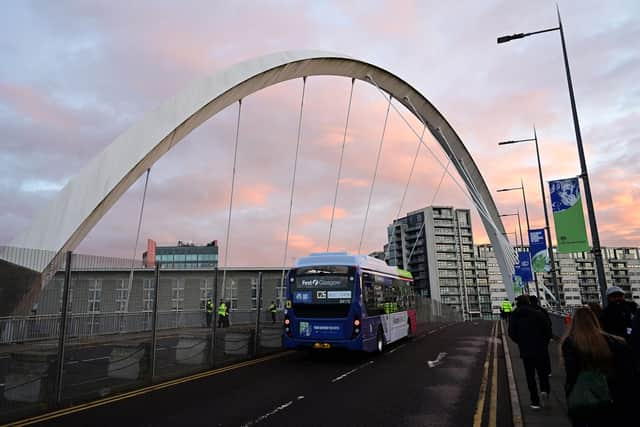Buses carry five times as many passengers as trains, yet receive a tiny fraction of railways' state support – Paul White
Buses are the predominant mode of public transport in Scotland, responsible for over 75 per cent of all such trips. They are flexible, sustainable, and accessible, taking people to work and school and connecting Scotland communities. The sector still faces several challenges, caused or exacerbated by the pandemic and Brexit.
Bus use has been in decline since the 1950s, as car use has increased. Congestion is already exceeding pre-pandemic levels, while public transport struggles to leave behind ideas, formed by Covid messaging, about avoiding enclosed spaces. Other lasting impacts of the pandemic include the rise in hybrid working and online shopping, which both further suppress bus use. While patronage has been slow to recover, costs have soared, including fuel, electricity, staff wages, parts and maintenance.
Advertisement
Hide AdAdvertisement
Hide AdThese challenges are not exclusive to Scotland. However, it is the first part of the UK to remove Covid recovery support for buses, with the gap between revenue and costs no longer part-subsidised by the government. This has meant operators across the country have been left with no option but to consider changes to fares structures and service levels, a position no operator wishes to be in as we look to promote and increase bus use, particularly during a cost-of-living crisis.
Claims that the government provides comprehensive support for the bus sector fail to take into account what this funding consists of and how it measures up against spending on other transport modes.
The budget to support the rail franchise is 13 times greater than the budget to support the bus sector, despite buses carrying almost five times as many passengers. The support grant rate for buses has not increased for over a decade. Meanwhile, as operational costs have grown, investment in zero-emission vehicles – to meet the government’s ambitious net-zero targets – has soared to more than £130m over the past four years.
Concessionary travel has been hugely successful in Scotland, with people under 22 joining the over-60s and disabled people in having access to free bus travel. Government often cites the concessions scheme as a form of support but, in reality, it is reimbursement for carrying journeys on the government’s behalf and is based on the objective that operators should be no better or worse off for doing so.
Supporting concessionary travel without providing equivalent support for operators to retain and grow the bus network will leave some people with a bus pass and no bus to use it on. The Scottish Government plans to look at all bus support in the coming year, with the aim of protecting services and reducing fares. The bus sector will be more than happy to engage.


Giving priority to buses is not solely about a fair allocation of road space. It is about receiving a fair allocation of transport spending, providing the choice of a reliable, affordable alternative to the car, and the country meeting its net-zero targets. My hope remains that the Scottish Government will choose the bus.
Paul White is director of the Confederation of Passenger Transport Scotland
Comments
Want to join the conversation? Please or to comment on this article.